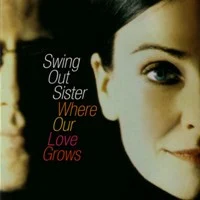Styles: Vocal
Year: 2018
File: MP3@320K/s
Time: 39:54
Size: 92,6 MB
Art: Front
(4:57) 1. Blue Moon
(3:26) 2. They Can't Take That Away from Me
(3:34) 3. Angel Eyes
(4:20) 4. Fly Me to the Moon
(3:40) 5. From This Moment On
(4:09) 6. Close to You
(3:42) 7. How High the Moon
(3:43) 8. Cry Me a River
(3:54) 9. Don't Take Your Love from Me
(4:25) 10. Night and Day
Jazz Sessions
Year: 2018
File: MP3@320K/s
Time: 39:54
Size: 92,6 MB
Art: Front
(4:57) 1. Blue Moon
(3:26) 2. They Can't Take That Away from Me
(3:34) 3. Angel Eyes
(4:20) 4. Fly Me to the Moon
(3:40) 5. From This Moment On
(4:09) 6. Close to You
(3:42) 7. How High the Moon
(3:43) 8. Cry Me a River
(3:54) 9. Don't Take Your Love from Me
(4:25) 10. Night and Day
Music is in my life since I can think.In my case music always had been present but for a long time it wasn’t at the centre of my thinking and activities yet. It was more an accompaniment of every of my daily actions, an accessory, an atmosphere, a song to sing or an open ear for sounds and noises. I always had a very sensible ear that hated rumors and couldn’t tolerate notes that weren’t perfectly clean. Who loved high and clear voices and memorized melodies quickly. I didn’t grow up in an artist environment even though my grand-grandmother, from which I had my name Ida, was a sculpturist and lived surrounded by famous 19th Century painters in Kleinmachnow just outside Berlin. One of her friends were Max Liebermann. I know her only from my father’s tellings.
I passed my childhood and adolescence by studying languages, literature and science, but music was my everyday companion, my friend, my breathe. That doesn’t mean that I wouldn’t have been in constant contact with music making. In my earliest childhood, I sang on my grandmother’s balcony and the neighbors listened to me. At the age of 6 I started to play piano, to sing in a church choir and to be part of a children dance theatre. Also my family enjoyed music. My grandmother played piano, my father accordeon and my mother guitar. They wanted to give us a good musical education. My mother was the one who raise my love for classical music as she took me to the opera house since I was a child. I knew all the arias of Mozart’s “Magical Flute” by heart and sang them the whole day long. She was also the one who forced me to practice piano everyday when I was about to quit at the age of 13. I couldn’t be any more thankful that she insisted.
I was very active at school performances. After a long and intense 70s musical rebel period in my adolescence at the sound of the The Doors, Janis Joplin and the Beach Boys, I discovered jazz music which would have been my strongest passion. Charlie Parker and Dave Brubeck had become my new heroes, Nina Simone and Ella Fitzgerald my idols. Soon the desire of letting music be a central part of my life became concrete. I was admitted to the Berlin University of Fine Arts and studied music pedagogy there until I left Germany for a student exchange program. My time at the UdK was one of the greatest I can remember. I had a female a cappella trio, sang in different choirs and we made plenty of University productions. It was a busy and fun period. http://www.idalandsberg.net/about-me/
I passed my childhood and adolescence by studying languages, literature and science, but music was my everyday companion, my friend, my breathe. That doesn’t mean that I wouldn’t have been in constant contact with music making. In my earliest childhood, I sang on my grandmother’s balcony and the neighbors listened to me. At the age of 6 I started to play piano, to sing in a church choir and to be part of a children dance theatre. Also my family enjoyed music. My grandmother played piano, my father accordeon and my mother guitar. They wanted to give us a good musical education. My mother was the one who raise my love for classical music as she took me to the opera house since I was a child. I knew all the arias of Mozart’s “Magical Flute” by heart and sang them the whole day long. She was also the one who forced me to practice piano everyday when I was about to quit at the age of 13. I couldn’t be any more thankful that she insisted.
I was very active at school performances. After a long and intense 70s musical rebel period in my adolescence at the sound of the The Doors, Janis Joplin and the Beach Boys, I discovered jazz music which would have been my strongest passion. Charlie Parker and Dave Brubeck had become my new heroes, Nina Simone and Ella Fitzgerald my idols. Soon the desire of letting music be a central part of my life became concrete. I was admitted to the Berlin University of Fine Arts and studied music pedagogy there until I left Germany for a student exchange program. My time at the UdK was one of the greatest I can remember. I had a female a cappella trio, sang in different choirs and we made plenty of University productions. It was a busy and fun period. http://www.idalandsberg.net/about-me/
Jazz Sessions



























